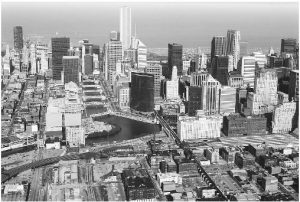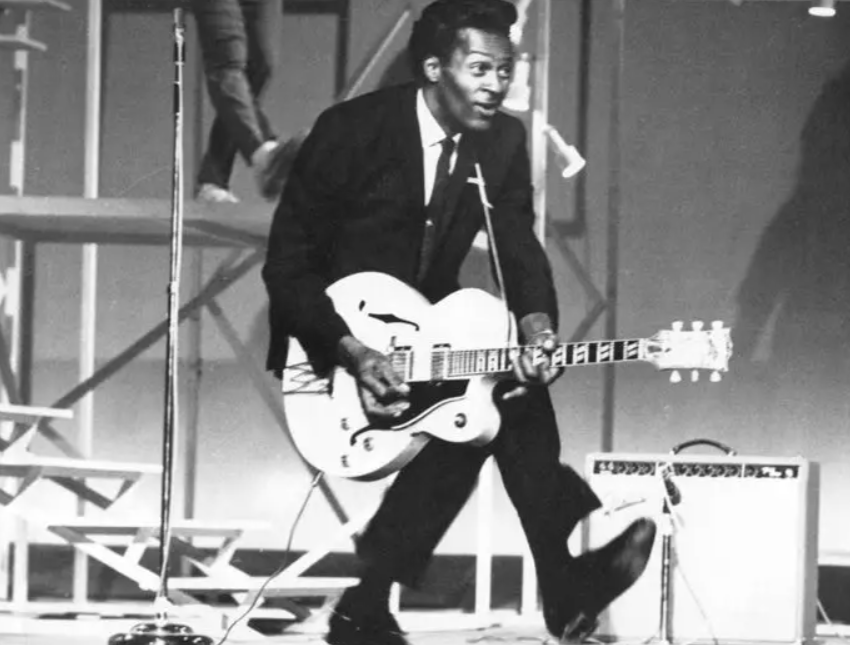(ThyBlackMan.com) I worked for 15 years as a teacher at Sumner Elementary School on Chicago’s West Side. This story brought tears to my eyes. An underserved North Lawndale inner-city community being used as a pawn in the governments/Chicago sting operation.
Promising beginnings
This curious story begins with seemingly-innocent intentions.
In the spring of 1989, Richard M. Daley was elected mayor of Chicago. The city had been grappling with some serious issues like a lack of jobs and a shrinking population. Daley promised to build the city back up—starting by doing extensive work on Chicago’s downtown core. Daley put money towards revitalizing key tourist attractions and fixing the city’s crippled infrastructure. This included a lot of construction, especially on Chicago’s roads.
Daley’s vision was first actualized by spring of the next year—1990. By this time, there were many different construction projects happening across the city of Chicago. The by-product of this extensive construction was a large quantity of debris (i.e. of gravel and concrete). I can remember teaching a Social Studies unit: Uplifting My Community; the infrastructure work going on around the school was being completed by a team of lily white individuals in fluorescent work vest and hard hats. Dare I say this school was 99% Black!
Fast forward to the issue: While most trucking companies followed the proper procedures for disposing of this debris, some chose to circumvent the process. Trucking companies who played by the rules had their debris dumped in legal landfills, which were quite far outside of Chicago.
Unfortunately, the discriminatory construction companies who decided to dump their debris illegally largely decided on some vacant lots within the neighborhood of North Lawndale. As mentioned earlier; one such dumpsite was just next to the window of my 6th grade classroom at Sumner Elementary School; I was so ashamed every time a child would look out the window and ask: “Mr. Buford, why is there no diversity in those work crews?”
The man behind the illegal dumping
The man behind this illegal dumping of debris in North Lawndale was named John Christopher. He was connected with the mob and also owed upwards of $80,000 to some construction companies.
In an effort to repay his debt, Christopher proposed a deal: he would allow the companies to dump their construction debris in his vacant North Lawndale lots. Since verified landfills were quite expensive for construction companies, this offer was appealing. For only $10 per load, Christopher allowed the companies to gradually fill these lots with debris. For reference, a standard dump truck carries up to 24 tons of debris. And Christopher’s shoddy landfill was large; at its biggest, it spanned the length of 13 football fields and was six stories high.
This deal saved the companies large amounts of money while also benefiting Christopher. He priced this deal very low in comparison to legal/verified landfills. The entire process was illegal.
A community fights back
Residents of North Lawndale were the ones who fought back against this illegal dumping of debris in their neighborhood.
In the spring of 1990, residents started to notice dump trucks coming into their community, sometimes even in the middle of the night. At first, people weren’t too concerned, although it did seem a bit strange.
But then, residents realized that the trucks were dumping large quantities of bricks, stones, concrete, and other debris into Christopher’s vacant lots.
Gladys Woodson was the president of her street’s block club, and residents began to bring concerns about this dumping of debris to her attention.
Not only was the de facto landfill aesthetically unpleasant, but with it came many other issues. For example, it attracted both rats and criminal activity. There was also a large amount of dust emanating from the lots. Naturally, community members were worried about the health and safety of North Lawndale residents.
In addition to the dumping of debris, residents also noticed a limo which regularly stopped by the lots. In the limo, they saw a strange man who wore flashy outfits. That strange man? He was John Christopher.
A long battle to fight
Gladys Woodson and other community members raised concerns about the dump’s impact on the health of residents, on the children living in the neighborhood, and even on local real estate. They argued that this dumping of debris was bringing down the value of North Lawndale entirely.
What seemed like a simple argument for the sake of their community actually turned into a much bigger and much more complicated matter. The process of finding justice for their community ended up taking several years.
The residents of North Lawndale were faced with opposition from many sides. From shady politicians to the Chicago mob, the community members were up against a lot.
Another complicating factor was racial discrimination—as a largely black city, it was difficult to find justice for this Chicago neighborhood. (One need only look at the current water crisis in Flint, Michigan to see how this kind of systemic discrimination continues in 2018. Largely-black communities are continuously ignored in policy change.)
There was also an FBI informant, directly linked to the dumping of debris in North Lawndale, whose information largely complicated the matter at hand.
While justice was eventually served; for the most part—the dump was eventually closed, many of those involved faced legal ramifications—the struggle was long. With the strength of its residents, North Lawndale was—at last—rid of this illegal dumping.
This strange case is an example of the power of a community, you might even say: “Uplifting My Community” and how the power therein can make a great change for the better.
Staff Writer; Stanley G. Buford
Feel free to connect with this brother via Twitter; Stanley G. and also facebook; http://www.facebook.com/sgbuford.




















Leave a Reply